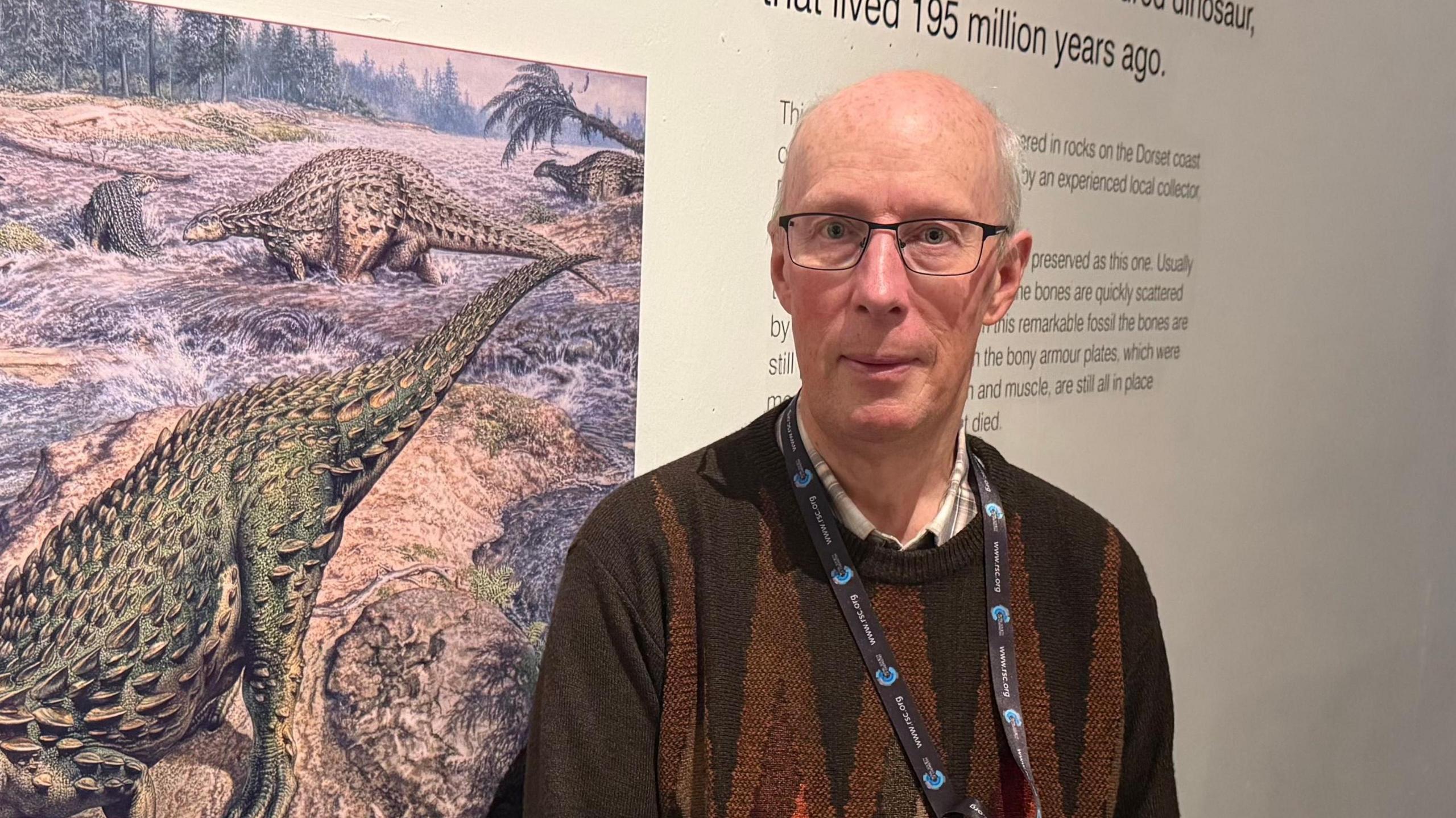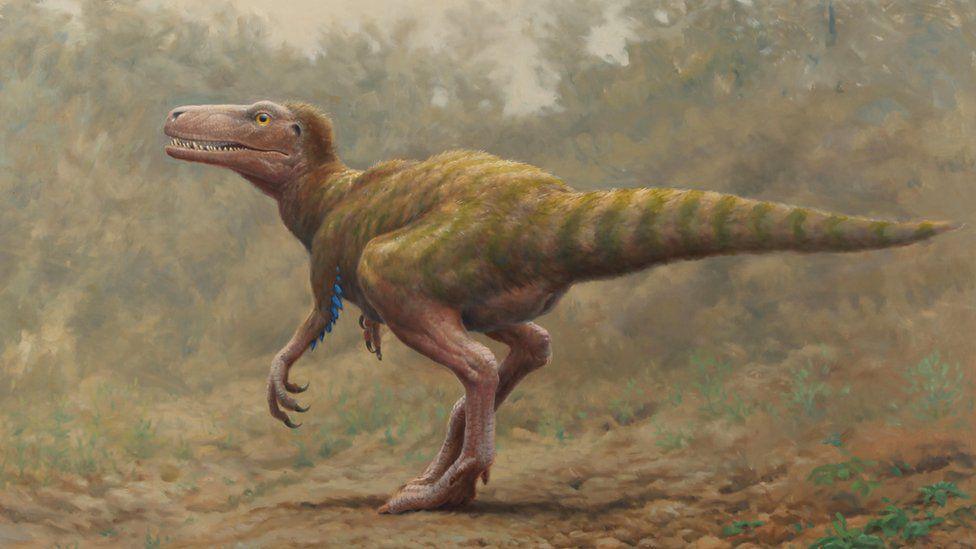How dinosaur fossils were found on an island with 'the wrong rocks'

Dr Mike Simms is curator of geology at National Museums Northern Ireland
- Published
Finding dinosaur fossils on the island of Ireland is harder than finding a "needle in a haystack", the curator of geology at National Museums Northern Ireland has said.
But the only two ever to have been found in the proverbial haystack will be on display in Cork for the next six months.
Fossil collector Roger Byrne found fossilised bones of two separate dinosaur species on the same beach in Islandmagee, County Antrim, more than four decades ago.
From Sunday, they will be on display as part of an exhibition at Glucksman Gallery in University College Cork (UCC), where for the first time the public can also see nearly 300 fossils from elsewhere.

The fossils are from 200 million years ago
The fossils are from 200 million years ago, meaning these dinosaurs roamed Earth during the Jurassic period.
Dr Mike Simms, from National Museums Northern Ireland, told BBC News NI that Ireland is an unlikely candidate for dinosaur-related discoveries because "we have the wrong sort of rocks".
"Most of the rocks that would contain dinosaurs that would be of the right age, we don't have," he said.
"They were eroded away long ago, so we're very, very lucky to have these.
"Most of the rocks we have that are the right age for dinosaurs were deposited out at sea."

The exhibit will feature skeleton casts of the only dinosaurs known to have lived on the island of Ireland
The fossils are normally on display at the Ulster Museum but they are being loaned to UCC.
"There will be big, spectacular, skeleton casts in this exhibition in Cork but alongside them will be these little bits of bone," said Dr Simms.
"I think it's a great opportunity because Cork is quite a long way away, so it's great that they get down to Cork for six months and people can appreciate them there."

One of the bones comes from the tibia (lower leg bone) of a two-legged meat-eater similar to Sarcosaurus
Who was Roger Byrne?
Mr Byrne taught at a school in Carrickfergus, County Antrim, and was "a very keen, enthusiastic fossil collector" who was "meticulous".
He found the bones in 1980 and 1981, on a beach near the Gobbins in County Antrim.
Dr Simms, who met him a few times, said he was a talented artist who drew the dinosaur bones he found.
"He was a really exceptional fossil collector - a very good eye - because these bones are basically rather rounded black pebbles and he found them on a beach that was covered with black pebbles."
A scientific study involving Dr Simms and the universities of Portsmouth and Queen's in Belfast confirmed the origins of the bones for the first time in 2020.
One is part of the lower leg bone of a carnivore similar to Sarcosaurus; the other is from the upper leg bone of a Scelidosaurus, a four-legged herbivore.
"It's an extraordinary find really, to find two different dinosaurs in a country which really we shouldn't have," Dr Simms said.
So could there be more fossils on Islandmagee beaches?
"Quite a few other people and Roger scoured it pretty carefully," Dr Simms said.
"I don't think there was really that much left after Roger had been back. He went back many times and his collection was donated to us after he died."

Experts suggest Scelidosaurus may have been a coastal animal, perhaps even eating seaweed like modern-day marine iguanas
Taoiseach (Irish Prime Minister) Micheál Martin, who will open the Domain of the Dinosaurs exhibition on Sunday, called it "a fantastic collaboration of science and the arts that truly captures the imagination".
The Islandmagee fossils will be joined by skeletal casts of the eight-metre-long apex predator Megalosaurus, the herbivores Scelidosaurus and Iguanodon, and the marine reptiles Ichythyosaurus and Plesiosaurus.